डॉ. के. सिवन
डॉ. के. सिवन (Dr. K. Sivan) का नाम है कैलाशावादिवो सिवन। डॉ ० के सिवन भारत के महान अंतरिक्ष वैज्ञानिक हैं, इन्हे भारत के रॉकेट मैन के रूप में भी जाना जाता है। इनका जन्म 14 अप्रैल 1957 को कन्याकुमारी के एक गांव सरक्कालविलाई में बहुत ही गरीब परिवार में हुआ था। उनके माता-पिता कैलासावदीवुनादार और चेलमल्ल हैं। परिवार इतना गरीब था कि के सिवन की पढ़ाई के लिए भी पैसे नहीं थे। के. सिवन गांव के ही सरकारी स्कूल में पढ़ते थे। 8वीं तक वहीं पढ़ेने के बाद आगे की पढ़ाई के लिए उन्हें गांव से बाहर निकलना था। लेकिन घर में पैसे नहीं थे।
के. सिवन को पढ़ने के लिए फीस जुटानी थी और इसके लिए उन्होंने पास के बाजार में आम बेचना शुरू किया। जो पैसे मिलते, उससे अपनी फीस चुकाते। इसरो चेयरमैन बनने के बाद के सिवन ने अंग्रेजी अखबार डेक्कन क्रॉनिकल से बातचीत के दौरान बताया था। आम बेचकर पढ़ाई करते-करते के. सिवन ने इंटरमीडिएट तो कर लिया, लेकिन ग्रैजुएशन के लिए और पैसे चाहिए थे। पैसे न होने की वजह से उनके पिता ने कन्याकुमारी के नागरकोइल के हिंदू कॉलेज में उनका दाखिला करवा दिया और जब वो हिंदू कॉलेज में मैथ्स में बीएससी करने पहुंचे, तो उनके पैरों में चप्पलें आईं।
इससे पहले के. सिवन के पास कभी इतने पैसे नहीं हुए थे कि वो अपने लिए चप्पल तक खरीद सकें। सिवन ने पढ़ाई की और अपने परिवार के पहले ग्रैजुएट बने। मैथ्स में 100 में 100 नंबर लेकर आए और फिर उनका मन बदल गया। अब उन्हें मैथ्स नहीं, साइंस की पढ़ाई करनी थी और इसके लिए वो पहुंच गए एमआईटी यानी कि मद्रास इंस्टीट्यूट ऑफ टेक्नॉलजी।
वहां उन्हें स्कॉलरशिप मिली और इसकी बदौलत उन्होंने एरोऩॉटिकल इंजीनियरिंग (हवाई जहाज बनाने वाली पढ़ाई) में बीटेक किया, साल था 1980. एमआईटी में उन्हें एस नमसिम्हन, एनएस वेंकटरमन, ए नागराजन, आर धनराज, और के जयरमन जैसे प्रोफेसर मिले, जिन्होंने के. सिवन को गाइड किया। बीटेक करने के बाद के. सिवन ने एयरोस्पेस इंजीनियरिंग में मास्टर्स किया, बैंगलोर के इंडियन इंस्टीट्यूट ऑफ साइंस से।
इसके बाद जब के. सिवन आईआईएस बैंगलोर से बाहर निकले तो वो एयरोनॉटिक्स के बड़े साइंटिस्ट बन चुके थे। धोती-कुर्ता छूट गया था और वो अब पैंट-शर्ट पहनने लगे थे। ISRO यानी इंडियन स्पेस रिसर्च ऑर्गनाइजेश के साथ उन्होंने अपनी नौकरी शुरू की। पहला काम मिला पीएसएलवी बनाने की टीम में।
पीएसएलवी यानी कि पोलर सेटेलाइट लॉन्च वीकल। ऐसा रॉकेट जो भारत के सेटेलाइट्स को अंतरिक्ष में भेज सके। के. सिवन और उनकी टीम इस काम में कामयाब रही। के. सिवन ने रॉकेट को कक्षा में स्थापित करने के लिए एक सॉफ्टवेयर बनाया, जिसे नाम दिया गया सितारा। उनका बनाया सॉफ्टवेयर बेहद कामयाब रहा और भारत के वैज्ञानिक जगत में इसकी चर्चा होने लगी। इस दौरान भारत के वैज्ञानिक पीएसएलवी से एक कदम आगे बढ़कर जीएसएलवी की तैयारी कर रहे थे।
जीएसएलवी यानी कि जियोसेटेलाइट लॉन्च वीकल। 18 अप्रैल, 2001 को जीएसएलवी की टेस्टिंग की गई, लेकिन टेस्टिंग फेल हो गई, क्योंकि जिस जगह पर वैज्ञानिक इसे पहुंचाना चाहते थे, नहीं पहुंचा पाए। के सिवन को इसी काम में महारत हासिल थी। अतः के सिवन को जीएसएलवी को लॉन्च करने का जिम्मा दिया गया और उन्होंने कर दिखाया।
इसके बाद से ही के. सिवन को ISRO का रॉकेट मैन कहा जाने लगा। इसके बाद के. सिवन और उनकी टीम ने एक और प्रोजेक्ट पर काम करना शुरू किया। प्रोजेक्ट था रियूजेबल लॉन्च वीकल बनाना। मतलब कि लॉन्च वीकल से एक बार सेटेलाइट छोड़ने के बाद दोबारा उस लॉन्च वीकल का इस्तेमाल किया जा सके। अभी तक किसी भी देश में ऐसा नहीं हो पाया था। के. सिवन की अगुवाई में भारत के वैज्ञानिक इसमें जुट गए थे।
इस दौरान के सिवन ने साल 2006 में एयरोस्पेस इंजीनियरिंग में आईआईटी बॉम्बे से डॉक्टरी की डिग्री हासिल कर ली और फिर ISRO में लॉन्च वीकल के लिए ईंधन बनाने वाले डिपार्टमेंट 2 जुलाई, 2014 को मुखिया बना दिए गए। एक साल से भी कम समय का वक्त बीता और के. सिवन को विक्रम साराभाई स्पेस सेंटर का मुखिया बना दिया गया। वो स्पेस सेंटर जिसका काम है भारत के सेटेलाइट्स को अंतरिक्ष में भेजने के लिए वीकल यानी कि रॉकेट तैयार करना।
यहां अभी के. सिवन एक साल भी काम नहीं कर पाए कि उस वक्त के ISRO के मुखिया ए.एस. किरन कुमार का कार्यकाल पूरा हो गया और फिर 14 जनवरी, 2015 को के. सिवन को ISRO का मुखिया नियुक्त किया गया। खाली वक्त में क्लासिकल तमिल संगीत सुनने और बागवानी करने वाले के सिवन को कई पुरस्कारों से नवाजा गया है। उनकी अगुवाई में ISRO ने 15 फरवरी, 2017 को एक साथ 104 सेटेलाइट अंतरिक्ष में भेजे। ऐसा करके ISRO ने वर्ल्ड रिकॉर्ड बना दिया और इसके बाद ISRO का सबसे बड़ा मिशन था चंद्रयान 2, जिसे 22 जुलाई, 2019 को ल़ॉन्च किया गया था। 2 सितंबर को चंद्रयान दो हिस्सों में बंट गया. पहला हिस्सा था ऑर्बिटर, जिसने चंद्रमा के चक्कर लगाने शुरू कर दिए. दूसरा हिस्सा था लैंडर, जिसे विक्रम नाम दिया गया था। इसे 6-7 सितंबर की रात चांद की सतह पर उतरना था।
2019 में जब चंद्रयान-2 मिशन बस चांद की सतह को छूने ही वाला था कि उसका लैंडर विक्रम की क्रैश लैंडिंग हो गई। इस मिशन को देखने के लिए खुद पीएम नरेंद्र मोदी भी पहुंचे थे। मिशन के असफल हो जाने के बाद के सिवन रो पड़े थे। तब पीएम मोदी ने उन्हें ढाढस बढ़ाया था।
हालांकि अब जब चंद्रयान-3 मिशन सफल हो चुका है, तो वह बेहद खुश हैं। उन्होंने चंद्रयान-2 के समय को याद किया और चंद्रयान-3 की सफलता पर बधाई दी। उन्होंने कहा कि वह कब से इस पल का इंतजार कर रहे थे।
English Translate
Dr. Sivan
dr. The name of Sivan (Dr. K. Sivan) is Kailashavadivo Sivan. Dr 0 K Sivan is the great space scientist of India, he is also known as the rocket man of India. He was born on 14 April 1957 in a very poor family in Sarakkalvilai, a village in Kanyakumari. His parents are Kailasavadivunadar and Chelamalla. The family was so poor that there was no money even for K Sivan's studies. Of. Sivan used to study in the government school of the village itself. After studying there till 8th, he had to move out of the village for further studies. But there was no money in the house.
Of. Sivan had to raise fees for studies and for this he started selling mangoes in the nearby market. With the money he got, he used to pay his fees. After becoming ISRO chairman, Sivan told during a conversation with the English newspaper Deccan Chronicle. While studying by selling mangoes, K. Sivan completed his intermediate, but needed more money for graduation. Due to lack of money, his father got him enrolled in Hindu College, Nagercoil, Kanyakumari and when he reached Hindu College to do B.Sc in Maths, slippers came on his feet.
Before that K. Sivan never had enough money to even buy slippers for himself. Sivan studied and became the first graduate in his family. Scored 100 out of 100 in maths and then changed his mind. Now he had to study science, not maths, and for this he reached MIT i.e. Madras Institute of Technology.
There he got a scholarship and due to this he did B.Tech in Aeronautical Engineering (aeronautical studies), the year was 1980. At MIT he got professors like S. Namasimhan, NS Venkataraman, A. Nagarajan, R. Dhanraj, and K. Jayaraman, who taught K. Jayaraman. Guided Sivan. After doing B.Tech. Sivan did his Masters in Aerospace Engineering from the Indian Institute of Science, Bangalore.
After this when K. When Sivan came out of IIS Bangalore, he had become a big scientist of aeronautics. The dhoti-kurta was discarded and now he started wearing pant-shirt. He started his job with ISRO i.e. Indian Space Research Organisation. Got the first job in the team to make PSLV.
PSLV stands for Polar Satellite Launch Vehicle. A rocket that can send India's satellites into space. Of. Sivan and his team were successful in this task. Of. Sivan created a software to put the rocket into orbit, which was named Star. The software he created was very successful and it started being discussed in the scientific world of India. During this, Indian scientists were preparing for GSLV by going one step ahead of PSLV.
GSLV stands for Geosatellite Launch Vehicle. GSLV was tested on April 18, 2001, but the testing failed because the scientists could not reach the place they wanted to reach. K Sivan had mastered this work. So K Sivan was given the responsibility of launching GSLV and he did it.
Since then K. Sivan came to be known as the Rocket Man of ISRO. After this K. Sivan and his team started working on another project. The project was to make a reusable launch vehicle. Meaning that once the satellite is released from the launch vehicle, that launch vehicle can be used again. So far this had not happened in any country. Of. Indian scientists were involved in this under the leadership of Sivan.
Meanwhile, Sivan obtained his doctorate in aerospace engineering from IIT Bombay in 2006 and was then made the head of ISRO's launch vehicle fueling department on July 2, 2014. Less than a year passed and K. Sivan was made the head of the Vikram Sarabhai Space Center. The space center whose job is to prepare vehicles i.e. rockets to send India's satellites into space.
Here now Sivan could not work even for a year that the then ISRO chief A.S. Kiran Kumar's term was completed and then on January 14, 2015, K.K. Sivan was appointed as the head of ISRO. K Sivan, who enjoys listening to classical Tamil music and gardening in his spare time, has been awarded several awards. Under his leadership, ISRO sent 104 satellites into space on February 15, 2017. By doing this ISRO made a world record and after this ISRO's biggest mission was Chandrayaan 2, which was launched on July 22, 2019. On September 2, Chandrayaan split into two parts. The first part was the orbiter, which started orbiting the moon. The second part was the lander, which was named Vikram. It was to land on the lunar surface on the night of 6-7 September.
In 2019, when the Chandrayaan-2 mission was just about to touch the lunar surface, its lander Vikram made a crash landing. PM Narendra Modi himself had also reached to see this mission. Sivan wept after the mission failed. Then PM Modi had encouraged him.
However, now that the Chandrayaan-3 mission has been successful, he is very happy. He recalled the time of Chandrayaan-2 and congratulated on the success of Chandrayaan-3. He said how long he had been waiting for this moment.
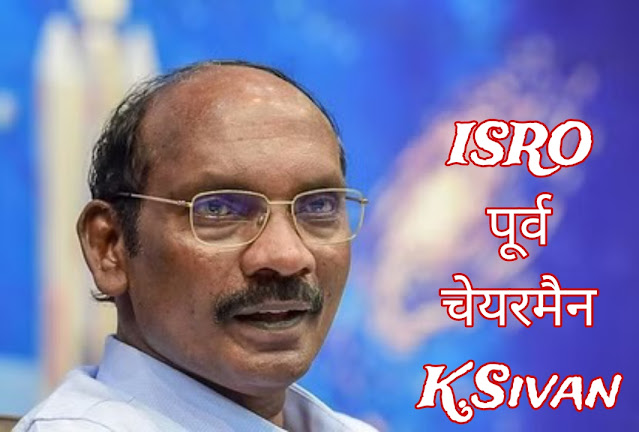
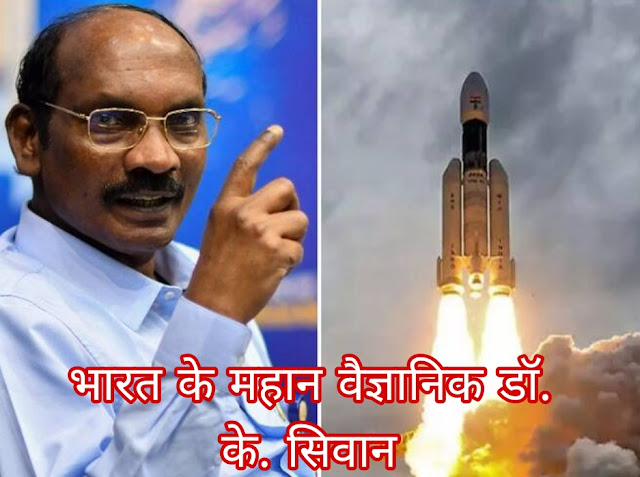
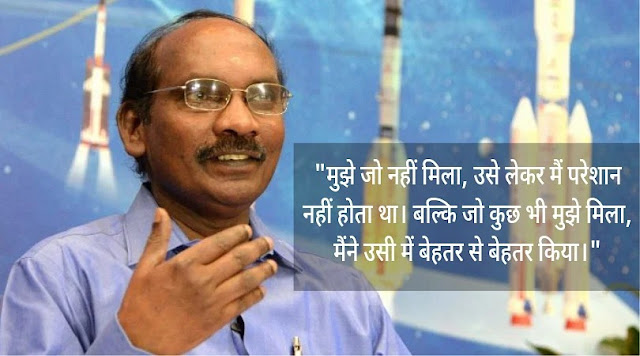
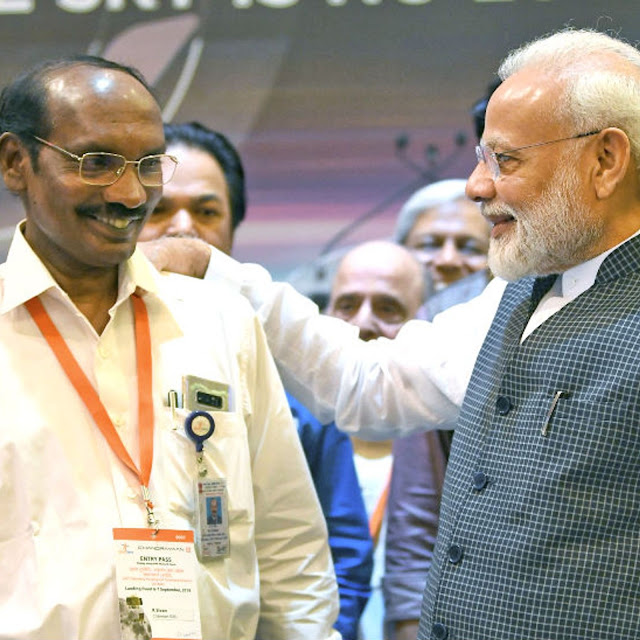
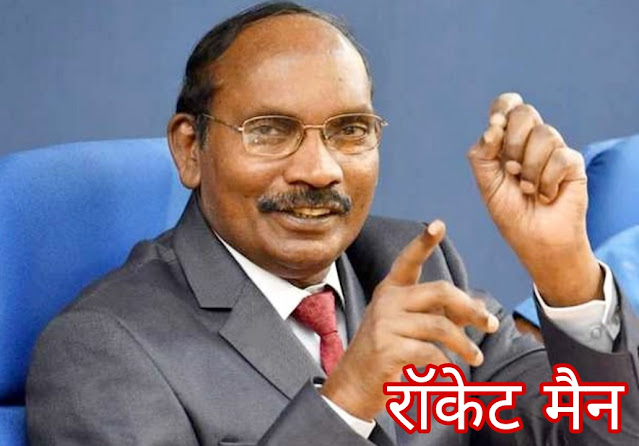
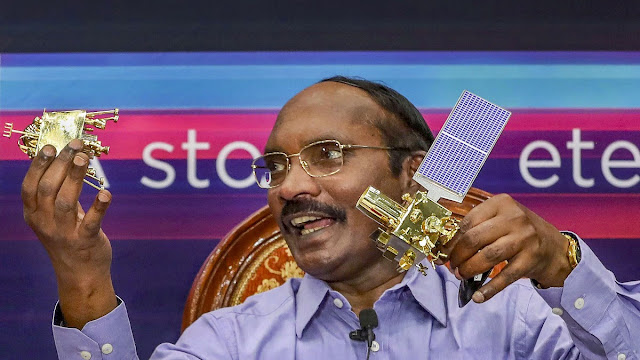
Salute to Dr Sivan and all team
ReplyDeleteअद्भुत व्यक्तित्व
ReplyDeleteVery nice
ReplyDeleteबढ़िया
ReplyDeleteVery nice...
ReplyDeleteशत शत नमन है
ReplyDeleteVery nice
ReplyDeleteबहुत ही बड़े गर्व की बात है कि ऐसे महान वैज्ञानिक हमारे (इसरो) इंडिया के पास है
ReplyDeleteBahut garv ki baat hai ki hamare desh me itne mahaan scientist hain..
ReplyDeleteBIG SALUTE 🫡
ReplyDeleteVery nice
ReplyDeleteVery nice
ReplyDelete🙏🙏🙏🚩🐅❣️🍃🙌
ReplyDeleteThe whole world was talking about getting the moon. India is at the forefront of the space conquest. Glory to India
ReplyDelete